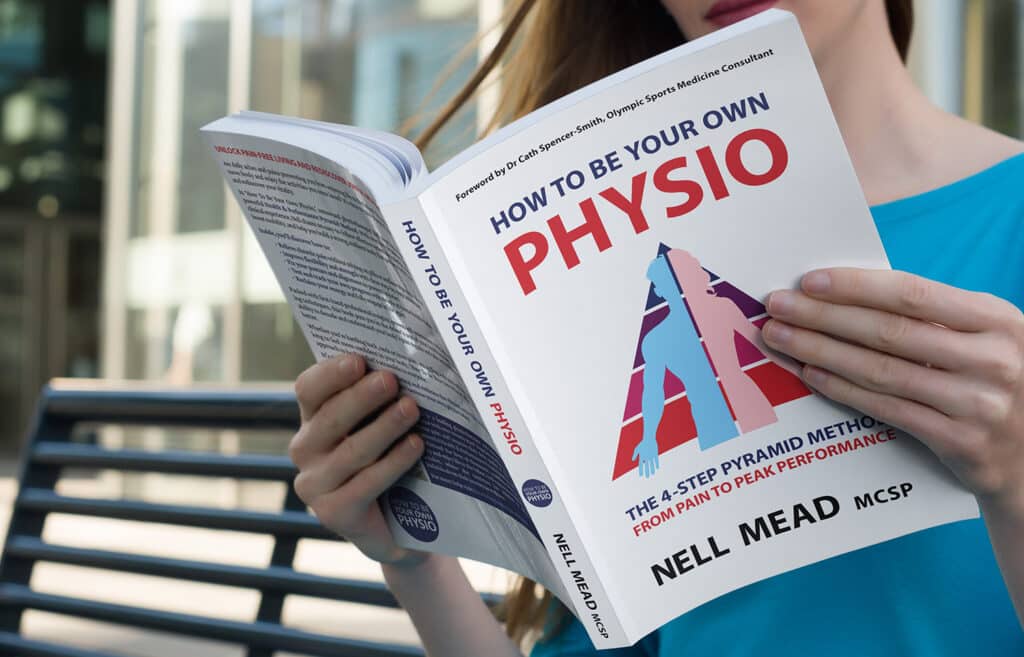I love tennis…
I’ve been in love with tennis – both as a player and as a fan – since I was about 13 years old, when we moved to East Finchley in North London. I’ve heard it said that the neighbouring suburb – Muswell Hill – has more tennis courts per capita than anywhere else in Europe, and I can well believe it.
Importantly though, there was a club within a 10-minute walk of my house, a coach who was prepared to offer lessons, and plenty of people my age and older who were willing to chase fuzzy yellow balls with me. Tennis quickly became a huge part of my life, taking up most of the time I wasn’t in school.
…and physiotherapy for tennis players
Six years later, I started training as a physiotherapist and began to understand the mechanics of human movement. For me, that became “how can I move more efficiently on a tennis court?” and I started to analyse why some players seemed to get injured more or less frequently than others. My final university placement was at the National Tennis Centre, which was then based at Queen’s Club. This was where players such as Tim Henman, Greg Rusedski and Jamie Delgado used to go for treatment. I spent a month working there with the incredible Dr John Allen, who remains the best diagnostician I have ever met, and I found it both fun and inspiring.
Once I qualified, other players and coaches started to seek me out, as a physiotherapist who understood tennis players, and together we would work out what was going on and how to help people improve their technique and movement patterns in order to reduce the risk of injury.
I continued to play and train in tennis throughout my time as a physiotherapist in the British Army. In 2008 I was posted to Cyprus, where I played for the Limassol Club; and in 2010 I ended up as the tennis physio for the Cyprus Davis Cup team, working with Marcos Baghdatis.
Since then, although my main role is in the City, I’ve always made time to treat tennis players: working with young performance players; working with club and county players and coaches; working with former Davis Cup player Danny Sapsford and his team of professionals who play tennis marathons annually in aid of the charity Bright Ideas for Tennis; and working with Jamie Murray’s Battle of the Brits event in 2021 (it was hugely exciting to be the on-court tennis physiotherapist for Andy Murray v Dan Evans, but I was relieved that neither of them fell over, as courtside physio in mask, apron and gloves is incredibly difficult!)
So why is it important, as a tennis player, to seek out a physiotherapist who understands tennis? It comes down to a few factors:
I understand how tennis players move
There are certain movements that are quite specific to tennis. The way tennis players produce power and transfer weight is unique – if you took the ball out of the equation, you’d still be able to tell a tennis player from a squash or badminton player. Understanding the movement patterns – how we set up for our shots, how we follow through, how we recover – is key. But it’s not just about understanding it from a theoretical perspective, because of course in practice, every tennis player moves and produces their shots differently.
Andre Agassi moved completely differently from Pete Sampras; players such Federer, Nadal, Djokovic, Murray, Venus and Serena Williams, Graf, Seles, Raducanu – all have very distinctive and very different movement patterns, and of course it’s the same with recreational and lower-level competitive players too. What they have in common though is the efficiency of their movements: they maintain great alignment, biomechanics and control throughout their stroke production, so their feet, knees, hips, pelvis, thorax, shoulder and arm are all working in harmony to produce a smooth and powerful shot every time.
When this doesn’t happen, you risk tennis player injuries – such as when I tore the labrum of my left hip a few years ago – so it’s important to work with someone who understands how you produce your strokes.
I understand how tennis players think
One of the things about tennis players is that we can be a bit obsessive and we don’t want to stop – even if it hurts. I occasionally play ITF Seniors events; and when I turned up to play my first-ever O35s tournament, the first match I saw in progress was in the men’s O85 category, with two elderly gentlemen competing for the chance to represent the Great Britain Over 85s team. (They still had fantastic-looking shots, but their knees were pretty shot, so at times it resembled more a game of chess than a game of tennis… that said, I hope I’m still competing when I’m 85!) I also remember an old chap at my club called Monty who was still playing a weekly men’s doubles at the age of 100. So we’re not good at giving up, and nobody likes to be told not to play.
Now, I’m not saying that I will never recommend you take a break from playing (I hate it when I can’t play, but after I had a rotator cuff muscle repair aged 27, I did have to take a few months off the court) but if I do have to ask you to put the brakes on, I will do my best to get you back on court in some capacity as quickly as possible.
I know how to make tennis players’ exercises relevant
Most physios should be good at prescribing exercises to help you recover from whatever injury you have. But there’s a difference between teaching you exercises that will make you better in general, and teaching you exercises that will make you better in the context of your tennis. It’s one thing to teach you glute (buttock muscle) exercises to help with your knee pain; it’s another to teach you to practise activating your glutes as you take your racket back prior to hitting your forehand, and as you transfer your weight from the back foot forward when you connect with the ball.
You also don’t have to be injured to benefit from rehab exercises! For example, when I met junior tennis player Dan in 2014, his coach asked him to see me because his forehand was so inconsistent, not because anything particularly hurt. We found that his ribcage was compensating for his stiff foot, which was affecting his shots.
I understand the difference between training and competing
I remember it being said that Anna Kournikova had the most incredible, consistent serve during her training sessions. She could practise it for hours and very rarely missed – but it all went to pot as soon as she hit the competition court, and famously she managed to win her second round match at the Australian Open in 1999 despite hitting a record 31 double faults.
Most tennis players will recognise that: when we start learning a new shot, we can be brilliant (or at least better) in practice, but all our beautifully-honed new technique goes out of the window once the red mist of competition descends. What does that mean for your physio? Well, it means you have to really put the work in to get your new, rehabtastic technique fully ingrained and integrated into your game (but when you do, your new movement efficiency means that you’ll be a more effective competitor!)
I can work with your tennis coach
If you have a coach, and want them to help you with your recovery, then something I regularly do (with my patients’ explicit permission) is to talk to the coach as well as the player, and get them to cue you as you train. For example, coach Mark O’Keefe recently recommended me to one of his players who has been getting sore knees.
We have been working on her glute activation (initially in isolation, and later in the context of tennis strokes) – and I’ve been communicating that to Mark, so that when the player sees him for her weekly lessons, he can keep reminding her to use her glutes when she sets her feet to hit her forehand. Working in this way, your tennis can become not just the game you love, but actually a positive part of your rehab and your injury prevention routine
Forearm, elbow and wrist physiotherapy
There are lots of good physios out there for common tennis injuries (forearm muscle strains, wrist and elbow injuries, ankle sprains, shoulder joint pain and general overuse injuries). However, relatively few who are as geeky about tennis as I am, or who understand the whole body as I do within the context of tennis. So if you want a quick and comprehensive recovery from your tennis injury (plus a toolkit of relevant exercises to keep you performing on court!) then please give my team a call on 0207 175 0150 and book your assessment now.







